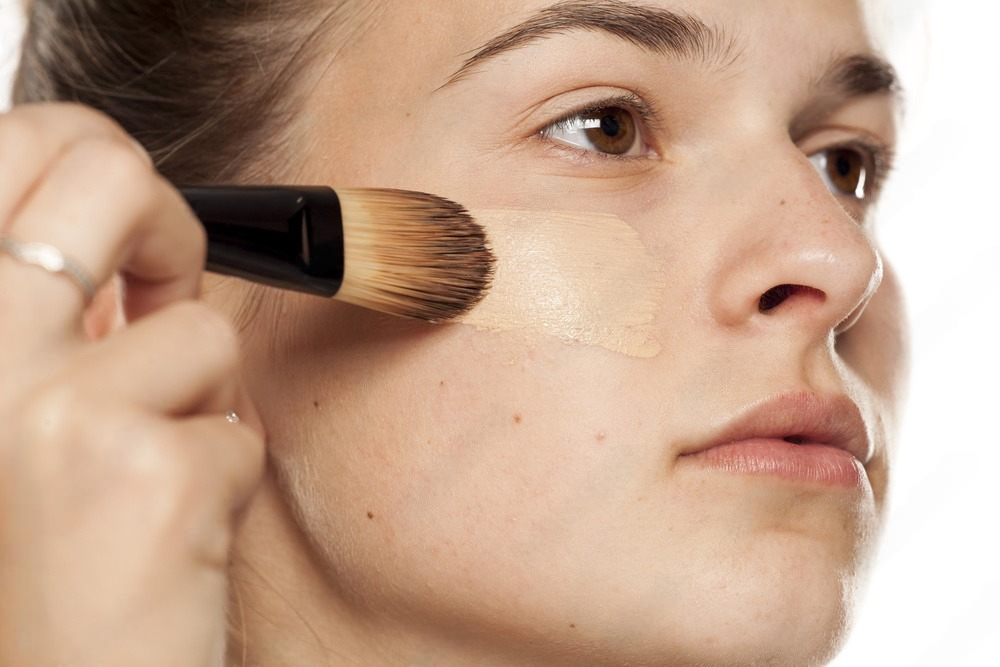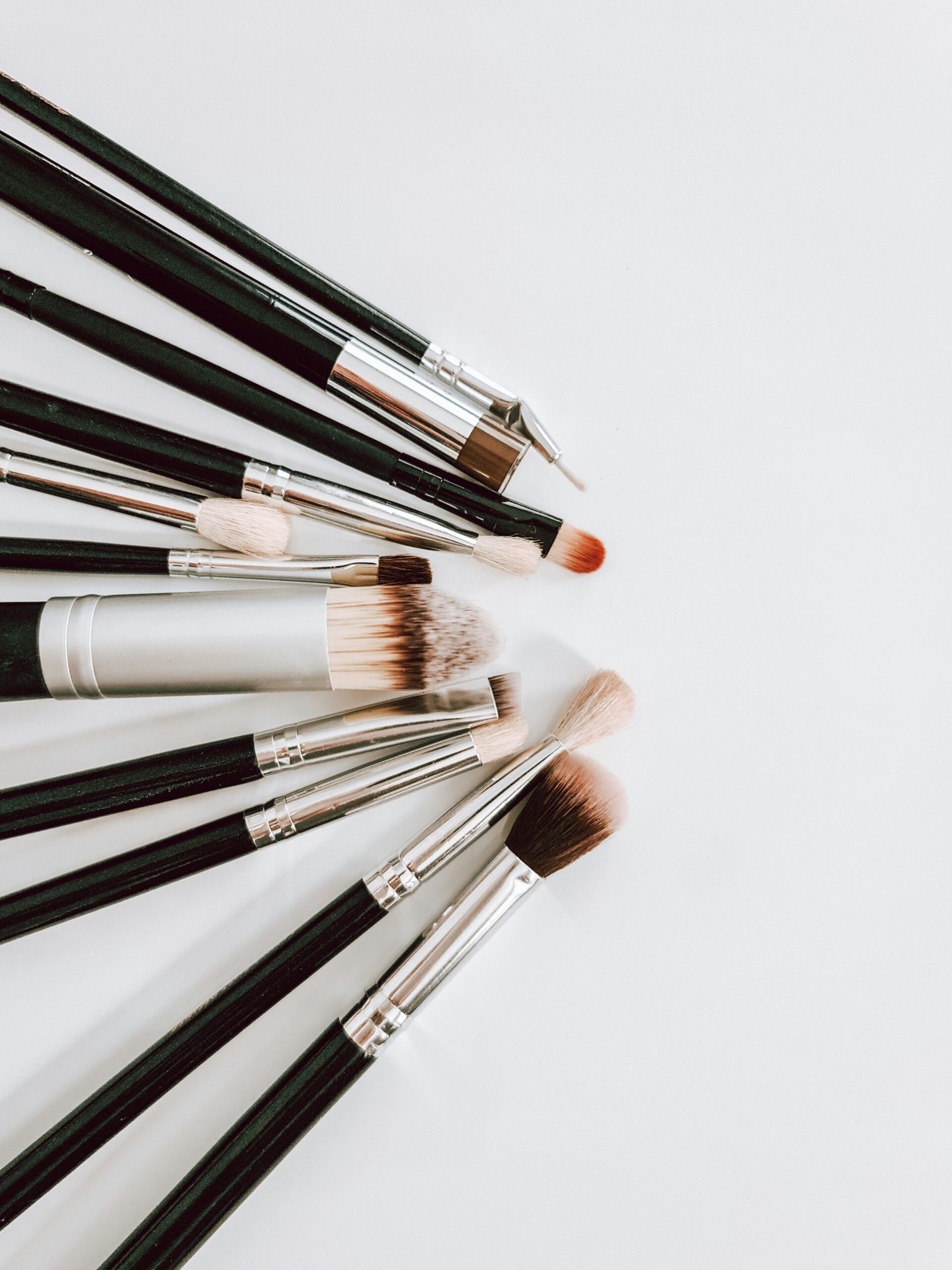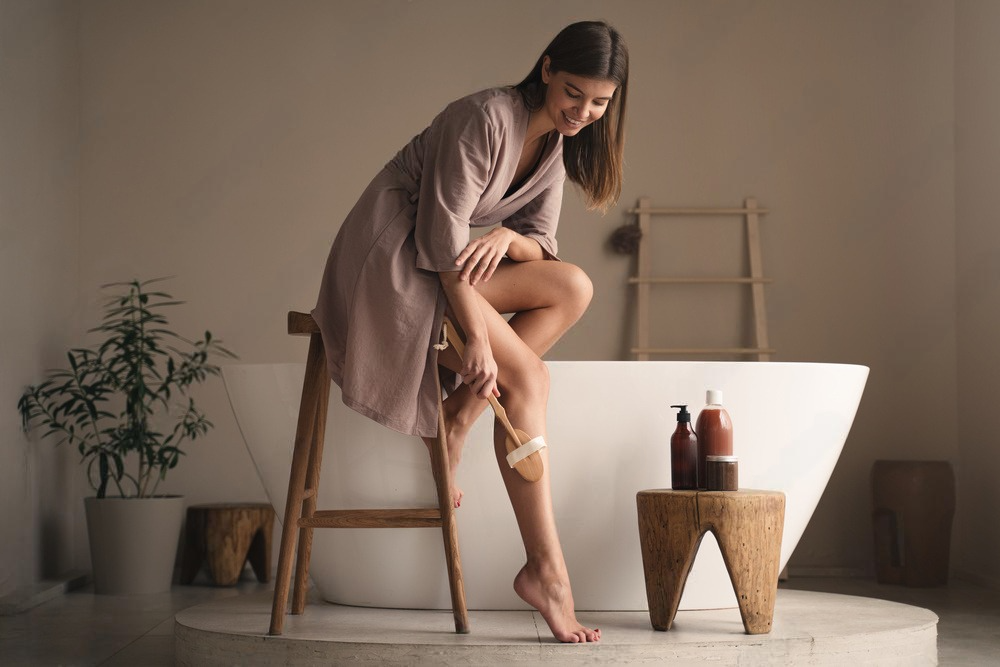When it comes to achieving a flawless makeup look, the foundation brush is your best friend. But what exactly is a foundation brush, and why is it so important? In this guide, we’ll delve into everything you need to know about foundation brushes, from choosing the right one to mastering the perfect application technique.
Table of Contents
What is a Foundation Brush?
A foundation brush is a makeup tool designed to apply foundation to the face. These brushes come in various shapes and sizes, each catering to different application techniques and finishes. Using a foundation brush can help you achieve a smooth, even, professional-looking finish that’s hard to match with other tools.
Importance of a Good Foundation Brush
A good foundation brush can make a difference in your makeup routine. It not only ensures an even application but also helps blend the product seamlessly into your skin. With the right brush, you can achieve a more natural and long-lasting finish.
Types of Foundation Brushes
Flat Foundation Brush

Flat foundation brushes are typically paddle-shaped and are great for applying liquid foundation. They allow you to paint the foundation onto your skin, providing smooth and even coverage. This type of brush is ideal for those who prefer a more controlled application, especially around areas that require precision, like the nose and mouth. Flat foundation brushes are often recommended for beginners due to their straightforward use. However, they may leave streaks if not blended properly, so it’s essential to follow up with a blending sponge or another brush to ensure a flawless finish.
Kabuki Brush

Kabuki brushes are known for their dense bristles and short handles. They are perfect for buffing foundation into the skin, giving you a flawless, airbrushed finish. The dense bristles help to distribute the foundation evenly across the face, making it an excellent choice for both liquid and powder foundations. Kabuki brushes come in various shapes, such as flat, angled, or rounded, each offering different benefits for blending and coverage. They are particularly useful for achieving a high-coverage look without the heaviness, making your skin look naturally smooth and radiant.
Stippling Brush
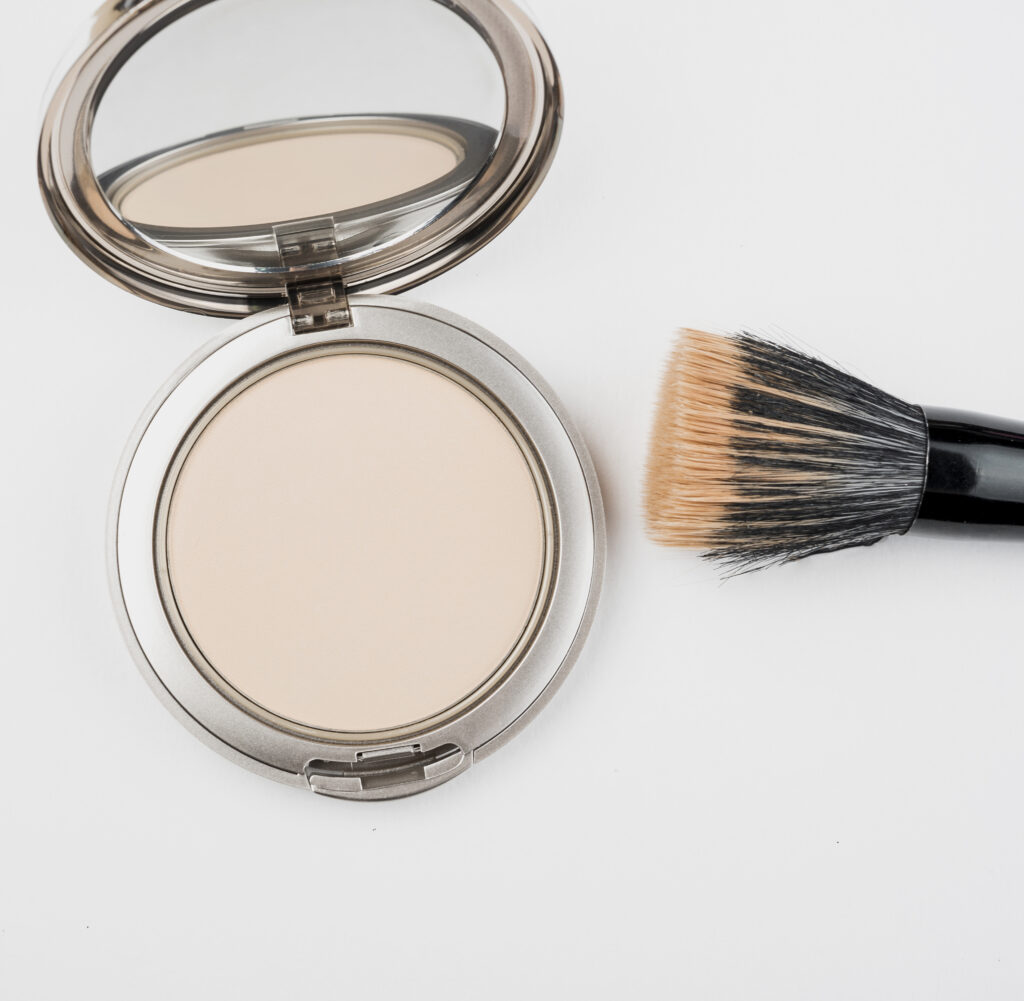
Stippling brushes feature dual-layered bristles of different lengths. They are ideal for a light, buildable application and are perfect for achieving a dewy, natural look. The longer bristles pick up the product, while the shorter bristles help to blend it seamlessly into the skin. This brush is excellent for layering foundation without looking cakey, making it a favorite for those who prefer a natural, skin-like finish. Stippling brushes can also be used for applying other makeup products like blush or highlighter, adding to their versatility in your makeup kit.
Angled Foundation Brush
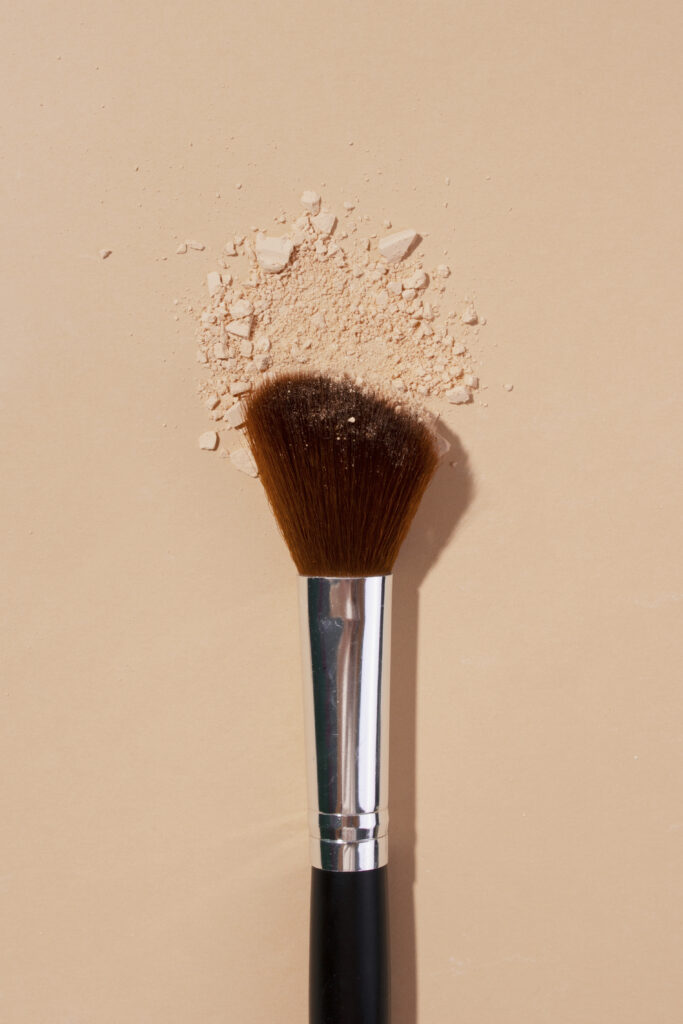
Angled foundation brushes are cut at an angle, making them perfect for reaching tricky areas like the sides of the nose and around the eyes. They provide precise application and can be used for contouring as well. The angled design allows for better control and more even coverage in hard-to-reach spots. This type of brush is also great for blending foundation into the hairline and jawline, ensuring there are no harsh lines. Angled brushes can be used with both liquid and cream foundations, making them a versatile tool in your makeup collection.
Buffing Brush
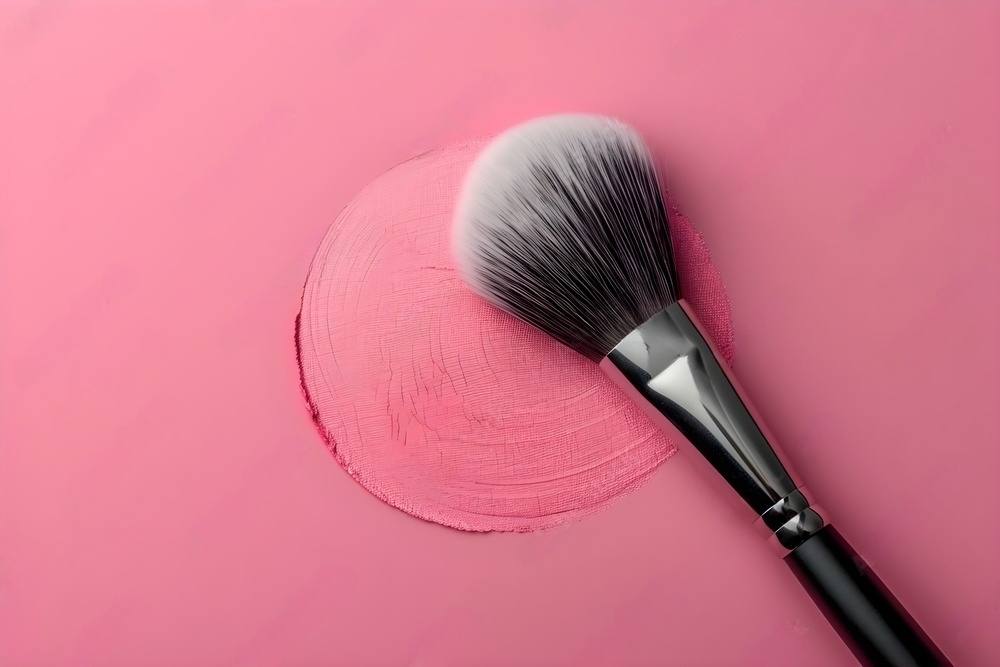
Buffing brushes have dense, rounded bristles and are excellent for blending foundation into the skin. They work well with both liquid and powder foundations, giving a seamless finish. The dense bristles allow for a buffing motion that blends the foundation smoothly into the skin, reducing the appearance of fine lines and pores. Buffing brushes are ideal for those who prefer a more polished and perfected look, as they provide higher coverage without looking heavy. They are also great for applying finishing powders, making them a multi-functional tool in your makeup routine.
Choosing the Right Foundation Brush
Skin Type Considerations
Different skin types require different brushes. For oily skin, a dense brush like a kabuki can help control shine, while a stippling brush is great for dry skin, providing a lighter, more natural finish. If you have sensitive skin, opt for brushes with softer bristles to avoid irritation. Those with acne-prone skin should ensure their brushes are cleaned regularly to prevent bacteria buildup. Understanding your skin type and its needs will help you choose a brush that not only applies foundation well but also maintains your skin’s health.
Foundation Formula Compatibility
The type of foundation you use will also influence your brush choice. Liquid foundations work well with flat or stippling brushes, while powder foundations pair best with buffing or kabuki brushes. Cream foundations can be effectively applied with angled brushes for precise application. It’s important to match your brush to your foundation formula to achieve the best results. Using the wrong brush can lead to uneven application and wasted product. Knowing how your foundation interacts with different brushes can make a significant difference in your makeup application process.
Desired Coverage
Your desired coverage level will determine the brush you choose. For full coverage, opt for a flat or kabuki brush. For a lighter, more natural look, a stippling or buffing brush is ideal. Flat brushes tend to pack on more products, making them suitable for covering blemishes and achieving a flawless look. On the other hand, stippling brushes offer buildable coverage, allowing you to layer the foundation without looking heavy. Understanding your coverage needs and the capabilities of different brushes will help you achieve your desired makeup look more efficiently.
How to Use a Foundation Brush
Prepping Your Skin
Before applying foundation, ensure your skin is clean and moisturized. This creates a smooth canvas for the foundation and helps it adhere better. Applying a primer can also enhance the longevity of your foundation and create a more even surface. Skipping this step can result in a patchy application and reduced wear time. Proper skin preparation ensures that your foundation goes on smoothly and lasts throughout the day. If you are curious to learn more about how to take care of your skin beforehand so that it’s easier to get a more radiant finish, do read my blog on “A Comprehensive Guide to Basic Skincare Routine 101”.
Picking Up the Product
Dip your brush into the foundation or pump a small amount onto the back of your hand. Lightly dab the brush into the product, ensuring it’s evenly distributed. Avoid overloading the brush with too much product, as this can lead to a cakey finish. It’s better to start with a small amount and build up coverage as needed. Properly picking up the product ensures an even application and prevents waste.
Applying the Foundation
Start applying the foundation in the center of your face and blend outwards. This technique ensures that the product is applied where you need it most, and the edges are seamlessly blended. Focus on areas that require more coverage, such as the nose and cheeks, and use whatever is left on the brush for the edges of your face. This method prevents the foundation from looking heavy around the jawline and hairline, creating a more natural finish.
Blending Techniques
Use circular motions or light-tapping movements to blend the foundation into your skin. This helps to avoid streaks and creates a more natural finish. Blending is crucial for a seamless look, ensuring there are no harsh lines or patches. Different brushes require different techniques; for example, a stippling brush benefits from a stippling (light tapping) motion, while a buffing brush works best with circular motions. Mastering blending techniques will elevate your makeup application, making it look professional and polished.
Tips for Flawless Foundation Application
Working in Natural Light
Always apply your foundation in natural light whenever possible. This helps you see how the foundation looks in real life and ensures even application. Artificial lighting can sometimes alter the perception of color and texture, leading to mismatched foundation shades and uneven coverage. Natural light provides the most accurate reflection of how your makeup will appear throughout the day. Setting up your makeup station near a window or using a daylight-simulating mirror can make a significant difference in the final look.
Using the Right Amount of Product
Less is more when it comes to foundation. Start with a small amount and build up if needed. This prevents cakiness and ensures a natural finish. Applying too much foundation can settle into fine lines and pores, making your skin look older and less smooth. By using a conservative amount initially, you can achieve a more skin-like appearance and add more product only in areas that need extra coverage. This technique helps to maintain a fresh and youthful look.
Layering for Coverage
For areas that need more coverage, apply foundation in thin layers. This allows you to build coverage without looking heavy or cakey. Layering also gives you more control over the final look, ensuring that you can address specific problem areas without overloading your entire face with the product. This method is especially useful for covering blemishes, redness, or discoloration while maintaining a natural finish on the rest of your skin. Thin layers blend more seamlessly and look more natural than a single, thick application.
Common Mistakes to Avoid
Using a Dirty Brush
A dirty brush can harbor bacteria and cause breakouts. Clean your brush regularly to ensure a smooth, flawless application. Product buildup on a brush can also lead to uneven application and streaks. Regular cleaning maintains the integrity of the bristles and ensures that the brush performs optimally. Additionally, a clean brush feels softer on the skin and prevents irritation. Make it a habit to clean your brushes weekly to keep your skin healthy and your makeup flawless.
Applying Too Much Product
Applying too much foundation can lead to a cakey finish. Start with a small amount and build up as needed. It’s easier to add more product than to remove excess once applied. Over-application can emphasize fine lines and pores, giving your skin a heavy and unnatural appearance. By starting with less product, you can gradually build to the desired coverage while maintaining a more natural and breathable finish. This approach also helps to extend the life of your foundation, making it more cost-effective.
Skipping Primer
Primer helps create a smooth base for your foundation and extends its wear time. Don’t skip this crucial step! A good primer can fill in fine lines and pores, creating a more even surface for foundation application. It also helps to control oil and shine, particularly for those with oily skin. Skipping primer can result in a patchy application and reduce the longevity of your makeup. By incorporating a primer into your routine, you can enhance the overall finish and durability of your foundation, ensuring it looks fresh throughout the day.
Maintaining Your Foundation Brush
How Often to Clean Your Brush
Clean your foundation brush at least once a week to prevent product buildup and bacteria. Regular cleaning ensures that your brush remains effective and safe to use. Bacteria can accumulate on dirty brushes, leading to skin irritation and breakouts. Weekly cleaning keeps your brush in top condition and ensures a smooth application every time. If you use your brush daily, consider a quick clean every few days and a thorough clean weekly to maintain optimal hygiene and performance.
Best Cleaning Methods
Use a gentle brush cleaner or mild soap and warm water. Swirl the brush in the solution and rinse thoroughly. Avoid soaking the brush, as this can loosen the glue that holds the bristles in place. Instead, focus on the bristles, gently massaging them to remove all product residue. Rinse under lukewarm water until the water runs clear. Reshape the bristles and lay the brush flat to dry, preferably with the bristles hanging over the edge of a counter to maintain their shape. Proper cleaning extends the life of your brush and ensures it performs at its best.
Storing Your Brush Properly
Store your brush in a clean, dry place. Avoid leaving it in damp areas to prevent mold and bacteria growth. A brush holder or a designated makeup storage container is ideal for keeping your brushes organized and protected. Make sure your brush is completely dry before storing it to avoid any moisture-related damage. Proper storage not only extends the life of your brush but also maintains its cleanliness and effectiveness. By taking a few extra steps to store your brush properly, you can ensure it stays in great condition and is ready for use whenever you need it.
DIY Foundation Brush Cleaning Solutions
Ingredients from Your Kitchen
You can make your own brush cleaner using ingredients like olive oil, dish soap, and white vinegar. Olive oil helps to condition the bristles, keeping them soft and supple, while dish soap effectively removes makeup residue. White vinegar acts as a disinfectant, ensuring that your brush is free from bacteria. These common kitchen ingredients can create a cost-effective and efficient cleaning solution for your brushes. Not only are they easy to find, but they also provide a gentle yet thorough cleaning without harsh chemicals.
Steps to Make Your Own Cleaner
Mix equal parts of olive oil and dish soap, then add a splash of white vinegar. Swirl your brush in the mixture and rinse thoroughly with warm water. The olive oil helps to break down makeup residue while conditioning the bristles, and the dish soap cuts through oils and product buildup. The white vinegar ensures that any bacteria are eliminated. After swirling the brush in the mixture, rinse under lukewarm water until all soap is removed. Gently squeeze out excess water, reshape the bristles, and lay the brush flat to dry. This DIY cleaner is a simple, effective way to keep your brushes clean and in excellent condition.
Foundation Brush vs. Other Application Tools
Brush vs. Sponge
Brushes offer more coverage and precision, while sponges give a more natural, blended finish. Choose based on your desired look and foundation type. Brushes are great for building coverage and achieving a more polished look. They are particularly useful for applying liquid and cream foundations, providing a smooth, even finish. Sponges, on the other hand, are ideal for a dewy, natural look, especially when used damply. They blend foundation seamlessly into the skin, reducing the appearance of texture and pores. Each tool has its own unique advantages, and choosing the right one depends on your personal preference and the specific needs of your makeup routine.
Brush vs. Fingers
Using fingers can warm up the product and provide a natural finish, but it lacks the precision and even coverage of a brush. Fingers can be effective for quick application and blending, particularly for cream products. The warmth of your fingers helps to melt the product into the skin, creating a natural, skin-like finish. However, brushes offer more control and a more professional look, especially for liquid and powder foundations. Brushes can also reach areas that fingers might miss, such as around the nose and eyes. Each method has its benefits, and many makeup enthusiasts use a combination of both to achieve their desired results.
Travel-Friendly Foundation Brushes
Compact Brushes
Look for retractable or compact brushes that are easy to carry and keep clean while traveling. Retractable brushes protect the bristles and prevent them from getting damaged or dirty in your makeup bag. Compact brushes are often designed with shorter handles and more durable bristles, making them perfect for on-the-go applications. These brushes are convenient for touch-ups throughout the day and ensure that you can maintain your flawless look even while traveling. Investing in a good-quality, travel-friendly brush can make your makeup routine more efficient and hassle-free when you’re away from home.
Dual-Ended Brushes
Dual-ended brushes offer the convenience of having two tools in one, saving space in your makeup bag. One end can be used for foundation application, while the other can be used for concealer or powder. This versatility makes dual-ended brushes an excellent choice for travel or for those who prefer a minimalist approach to their makeup tools. They are designed to be compact and efficient, providing multiple functions without taking up extra space. Dual-ended brushes are a practical and efficient addition to any makeup collection, especially for those who are frequently on the move.
Budget vs. High-End Brushes
Pros and Cons of Each
High-end brushes often have better-quality bristles and last longer, but budget brushes can be just as effective with proper care. High-end brushes are typically made with finer materials and undergo more rigorous manufacturing processes, resulting in softer bristles and more durable handles. They often provide a more luxurious application experience and can last for many years with proper maintenance. However, budget brushes have improved significantly in quality and can deliver excellent results, especially for those just starting with makeup or looking to expand their collection without breaking the bank. The key is to find a balance between quality and cost, ensuring that you invest in brushes that meet your needs and expectations.
Finding the Best Value
Look for brushes that offer good quality at a reasonable price. Read reviews and consider buying from trusted brands. Many mid-range brands offer brushes that perform just as well as high-end ones at a fraction of the cost. Online reviews and recommendations from beauty experts can provide valuable insights into the performance and durability of different brushes. Consider factors like bristle quality, handle durability, and the brand’s reputation when making your choice. Investing in a few high-quality brushes rather than a large set of mediocre ones can often provide better value and more satisfaction in the long run.
Recommended Foundation Brushes
Top Picks for Different Budgets
- Budget: e.l.f. Ultimate Blending Brush: This brush offers excellent performance at an affordable price, making it a favorite among budget-conscious beauty enthusiasts.
- Mid-Range: Real Techniques Expert Face Brush Known for its high-quality bristles and ergonomic design, this brush delivers professional results without the high price tag.
- High-End: Sigma Beauty F80 Flat Kabuki Brush A top choice among makeup artists, this brush is renowned for its dense bristles and flawless application.
Popular Brands
Some popular brands known for their quality brushes include Sigma Beauty, Real Techniques, and Morphe. These brands have established reputations for producing reliable and effective brushes that cater to various needs and preferences. Sigma Beauty is often praised for its innovative designs and durable construction, while Real Techniques is beloved for its affordability and user-friendly products. Morphe offers a wide range of brushes that cater to both beginners and professionals and are known for their stylish designs and high performance. Investing in brushes from these reputable brands can enhance your makeup routine and ensure you achieve the best results.
Expert Tips from Makeup Artists
Insider Secrets
Makeup artists recommend cleaning your brush with a silicone cleaning pad to ensure all product buildup is removed. These pads have textured surfaces that help to deep clean the bristles, removing stubborn residue that can’t be washed away with soap and water alone. Additionally, many professionals suggest using a brush cleanser specifically formulated for makeup brushes to maintain their integrity and prolong their lifespan. By incorporating these insider tips into your routine, you can keep your brushes in top condition and achieve a flawless makeup application every time.
Pro Techniques
For a flawless finish, use a damp sponge to blend out any harsh lines after applying foundation with a brush. This technique helps to merge the foundation seamlessly into the skin, creating a more natural and even appearance. Another pro tip is to apply foundation in thin layers, building up coverage gradually to avoid a heavy or cakey look. Many makeup artists also recommend using a setting spray to finish the look, ensuring that the foundation stays in place and looks fresh throughout the day. Incorporating these professional techniques can elevate your makeup application and give you a polished, professional finish.
A good foundation brush is essential for achieving a flawless makeup look. By understanding the different types of brushes, how to choose the right one, and how to use and maintain it properly, you can elevate your makeup game to the next level. Don’t be afraid to experiment and find the brush that works best for you!
Frequently Asked Questions (FAQs)
How Often Should I Replace My Foundation Brush?
Replace your foundation brush every 1-2 years, or sooner if the bristles start to fray or shed. Regularly inspecting your brushes for signs of wear and tear can help you determine when it’s time for a replacement. Using a brush past its prime can lead to uneven application and potential skin irritation. Keeping your brushes in good condition ensures a smooth and flawless makeup application every time.
Can I use the same brush for liquid and powder foundation?
Yes, but clean the brush thoroughly between uses to avoid product buildup and ensure a smooth application. Using the same brush for different types of foundation can be convenient, but it’s essential to maintain its cleanliness to prevent mixing formulas, which can affect the final look. Proper cleaning ensures that your brush performs optimally and that your makeup application remains consistent and flawless.
How do I prevent streaks?
Use a brush with densely packed bristles and blend in circular motions. A finishing sponge can also help to smooth out any streaks. Ensuring that your foundation is evenly distributed on the brush before application can also minimize streaks. Blending thoroughly and using the right techniques can make a significant difference in achieving a smooth and streak-free finish.
What’s the Best Way to Clean My Brush?
Use a gentle brush cleaner or mild soap and water. Clean your brush weekly to maintain its performance and hygiene. Regular cleaning prevents product buildup and bacterial growth, ensuring that your brush remains effective and safe to use. Properly maintaining your brushes through regular cleaning can extend their lifespan and enhance your makeup application.
Are expensive brushes worth it?
While expensive brushes often have higher-quality bristles and construction, many budget-friendly options perform just as well. It’s more about how you use and care for the brush. Investing in a few high-quality brushes can be beneficial, but it’s also possible to find excellent performance from more affordable options. The key is to choose brushes that meet your needs and to maintain them properly to ensure they perform at their best.

